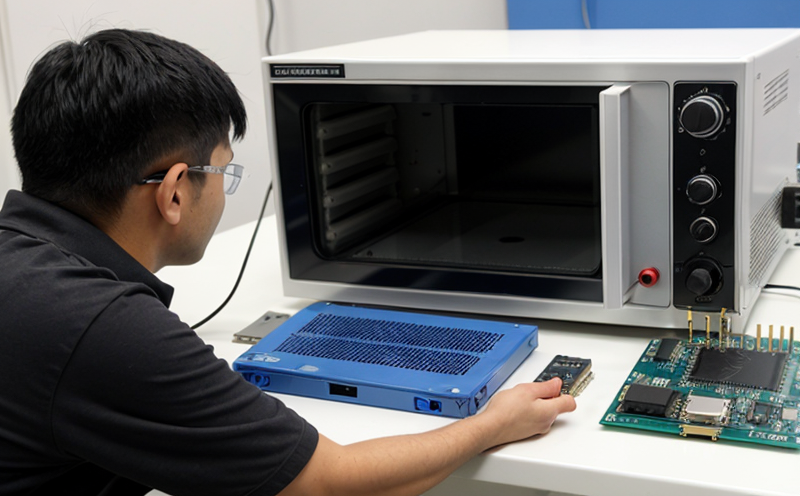GOST R 52350 Safety Testing for Electronic Components
The GOST R 52350 standard is a critical component of safety testing in the electronics industry, particularly for electronic components. This standard ensures that all electronic products comply with stringent safety requirements set by Russian regulatory bodies. GOST R stands for "Gosudarstvennaya Standardizatsiya Rossii," which translates to "State Standardization of Russia." The 52350 part specifies the essential tests and procedures necessary to verify the electrical safety of electronic components.
The process involves a series of tests designed to evaluate the ability of electronic components to withstand overvoltages, overcurrents, and other hazardous conditions without compromising their integrity or causing harm. The testing ensures that components meet critical safety thresholds set by GOST R 52350, which includes insulation resistance, creepage distance, clearance, and protection against mechanical stress.
For quality managers and compliance officers, understanding the nuances of this standard is essential to ensure continuous adherence to regulatory requirements. R&D engineers rely on these tests to refine product designs before mass production, while procurement teams use them as a benchmark for selecting reliable suppliers. The testing process is rigorous and involves detailed documentation, ensuring that each component meets not only Russian standards but also international best practices.
The GOST R 52350 standard covers various types of electronic components including integrated circuits (ICs), capacitors, resistors, transistors, diodes, and more. The testing process is meticulously designed to simulate real-world conditions that these components might encounter during use or transport.
The standard emphasizes the importance of electrical insulation as a critical factor in ensuring safety. Insulation resistance tests are conducted using high-voltage DC sources to measure the ability of insulating materials to prevent leakage currents. Clearances and creepage distances also play a vital role, determining the minimum space required between conductors or between conductors and other surfaces to avoid short circuits.
The testing process for GOST R 52350 is comprehensive and involves several stages:
- Preparation of test specimens
- Application of test voltages
- Measurement of electrical parameters
- Data analysis and reporting
The testing apparatus used includes high-voltage generators, insulation testers, multimeters, and other precision instruments. The specimens are prepared by carefully selecting components that represent the typical range of products in terms of size, power ratings, and expected environmental conditions.
Once the tests are completed, detailed reports are generated. These reports not only document the results but also provide insights into potential improvements or issues that need addressing. The testing process is a key component of quality assurance programs, ensuring that products meet all safety requirements before being introduced to the market.
Why It Matters
The GOST R 52350 standard matters because it ensures that electronic components are safe for use in a wide range of applications, from consumer electronics to industrial equipment. Compliance with this standard is crucial for several reasons:
- It protects end-users by reducing the risk of electrical accidents.
- It enhances product reliability and longevity.
- It fosters trust between manufacturers, suppliers, and regulatory bodies.
- It aligns with international best practices in electrical safety.
The standard is particularly important for industries where the failure of electronic components could lead to severe consequences. For example, in medical devices or aerospace equipment, non-compliance can have catastrophic results. By adhering to GOST R 52350, manufacturers can ensure that their products are safe and reliable.
In addition to safety, compliance with this standard also contributes to the reputation of a company. Consumers trust brands that prioritize safety and quality in their products. This trust translates into customer loyalty and repeat business, which is essential for long-term success.
Industry Applications
| Industry Segment | Applications |
|---|---|
| Aerospace & Defense | Ensuring reliability of components in critical systems. |
| Medical Devices | Protecting patients from electrical hazards. |
| Automotive Electronics | Enhancing safety features and reducing risk of malfunctions. |
| Consumer Electronics | Ensuring product safety for end-users. |
| Telecommunications | Guaranteeing reliable communication systems. |
Environmental and Sustainability Contributions
The GOST R 52350 standard contributes to environmental sustainability by promoting the use of safer, more reliable electronic components. By ensuring that components meet stringent safety standards, manufacturers can reduce waste and improve resource efficiency. This is particularly important in industries where the failure of a single component could result in significant downtime or repair costs.
Compliance with this standard also supports sustainable practices by encouraging companies to adopt better manufacturing processes and materials. The testing process helps identify potential issues early, allowing manufacturers to make necessary adjustments before products reach the market. This reduces the likelihood of defective components being sold, which in turn minimizes waste and encourages a more circular economy.
The standard also promotes the use of recyclable materials and energy-efficient designs, aligning with broader sustainability goals. By adhering to GOST R 52350, manufacturers can contribute to a more sustainable future by producing products that are not only safe but also environmentally responsible.





